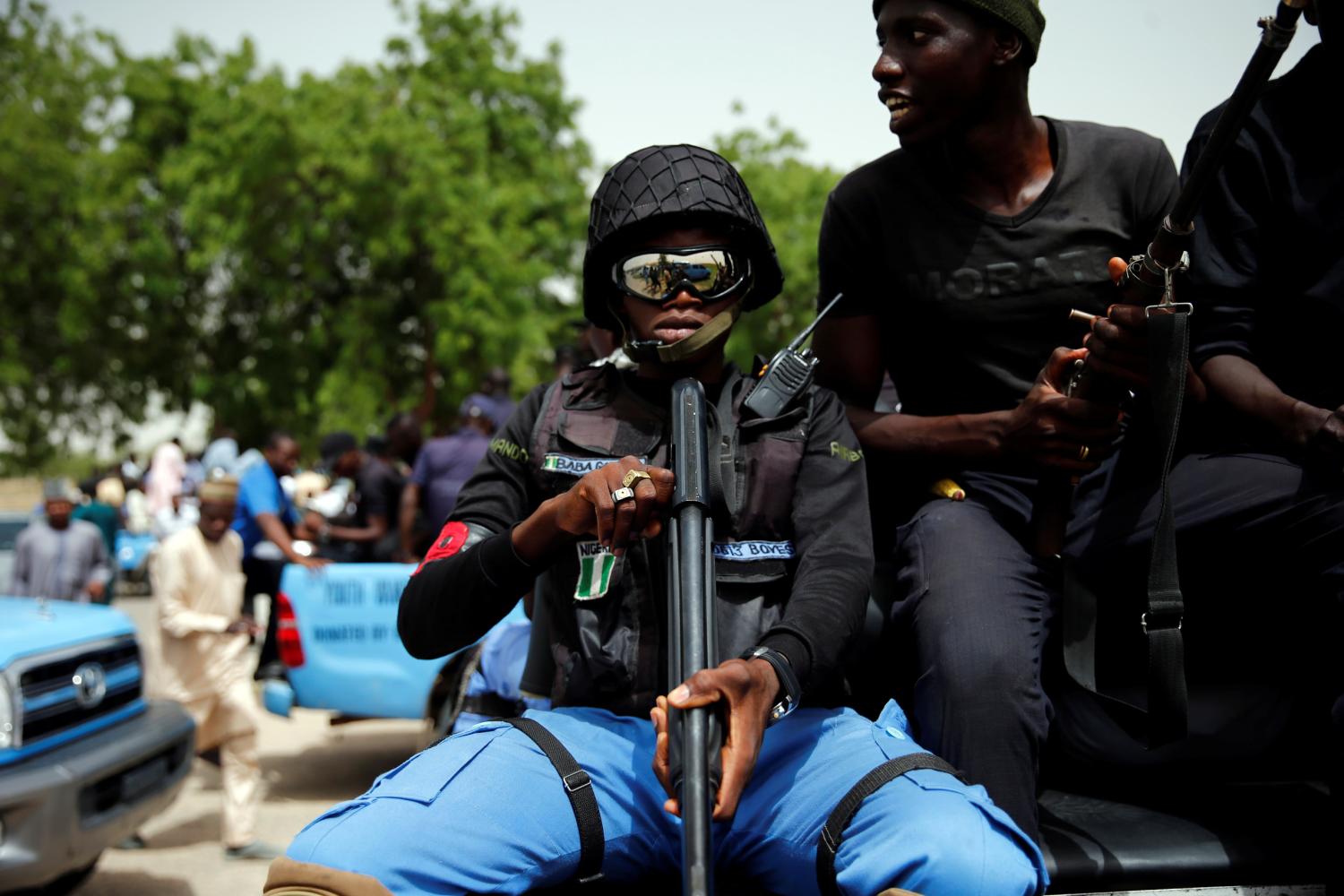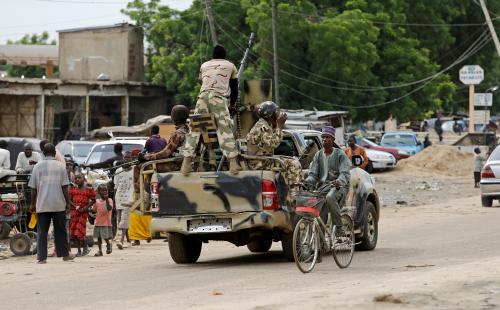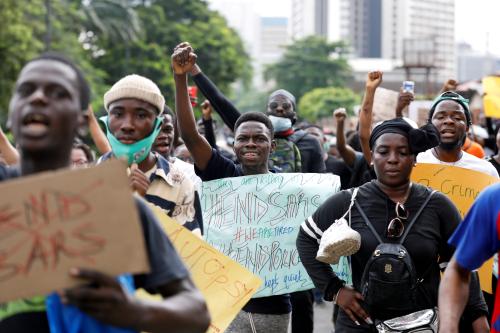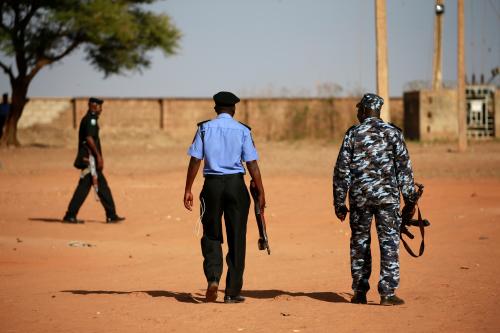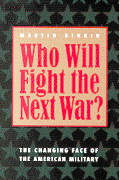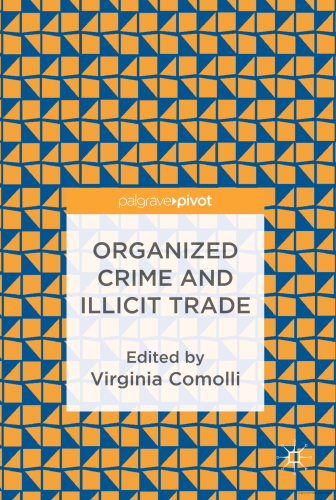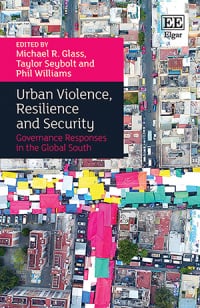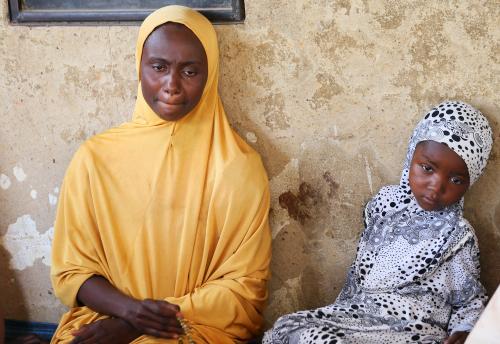The following introduction is an excerpt from the case study, “Militias (and militancy) in Nigeria’s north-east: Not going away,” produced by Vanda Felbab-Brown for the United Nations University report, “Hybrid conflict, hybrid peace: How militias and paramilitary groups shape post-conflict transitions,” of which Adam Day was the project lead. The full case study can be found here.
Introduction
Since 2009, an insurgency calling itself The People Committed to the Propagation of the Prophet’s Teachings and Jihad (Jama’tu Ahlis Sunna Lidda’awati wal-Jihad in Arabic) has caused devastating insecurity, impoverishment, displacement, and other suffering in Nigeria’s poor and arid North- East Zone.1 The group is better known to the world as Boko Haram, and although the Nigerian Government and military mobilized against it between 2015 and 2018, intense insecurity and violence not only persist, but have actually increased since 2018. The Nigerian military has been put on the defensive. A Boko Haram splinter faction, the Islamic State’s West Africa Province (ISWAP), has become politically entrenched and poses an even larger challenge to the Nigerian military than the remainder of Boko Haram. (The rump Boko Haram also sometimes calls itself ISWAP, but in this study, the term is reserved for the splinter faction.)
Initially indifferent to Boko Haram, the Nigerian State security services have proven largely ineffective against the insurgency, though often brutal in their response. The shortcomings of the Nigerian State have created a fertile environment for the emergence of anti- Boko Haram militias, many of which rose up as community protection groups across northern Nigeria. Today, more than a decade into the conflict, these militias are at the forefront of operations against Boko Haram and ISWAP and constitute a core component of security provision in the North-East. Developing an appropriate policy response to this crisis requires understanding these militia groups, and the diverse effects they have on the battlefield, security, human rights, politics and the economy.
Multiple militias and vigilante groups operate in Nigeria’s North-East against Boko Haram and ISWAP. In addition to the main umbrella militia group, known as the Civilian Joint Task Force (CJTF), militias operating in the North-East also include so-called kesh-kesh groups, hunters’ groups, and the Vigilante Group of Nigeria (VGN). These groups vary in their organization and relationship with the CJTF, often competing with it.2 Their emergence and persistence across much of Nigeria stems from deficiencies in State-provided security, and a long tradition of vigilante groups, going back to the precolonial era.
Although the militias have no legal standing or assured financial and other resources, the Nigerian military continues to rely on them for intelligence gathering, defensive operations, holding territory, and even offensive actions. State-level government officials rely on them for an increasing variety of policing, from the resettlement of internally displaced people (IDPs) to counter-narcotics operations. International donors and NGOs engage with them for humanitarian aid distribution in IDP camps, while national and local politicians seek to appropriate them for their political purposes. For many local communities, the militias are the main agents for policing, security provision and a range of governance functions, including dispute resolution and judicial processes. Local communities frequently see the militias as being closer to them and better at providing for their security than the official police or military.
However, militias and vigilante groups also pose serious challenges for the Nigerian Government and for local communities. Facing no accountability for their actions, they are a source of insecurity, perpetrating serious human rights abuses and predations with impunity. In many settings, they challenge the authority of local government officials and traditional leaders, arrogating to themselves a wide range of governance powers. Like the Nigerian military, militias have also become deeply integrated in the North-East’s war economy, participating in various forms of criminality even as they purportedly act as local police forces. As a result, some have become dependent upon Nigeria’s instability for their own survival. Such militias profit from the conflict and have few incentives to pursue peace.
As such, there is little prospect that these militias will demobilize once the military conflict against Boko Haram and ISWAP has ended. The results of recent inquiries into the potential demobilization, disarmament and reintegration (DDR) and job training opportunities for militia members in the North-East have only underscored their intention not to disband.3 In fact, many groups have lobbied for their formal legalization within the Nigerian State, including going on permanent government payrolls. Already facing major strains on federal and local budgets, it is unlikely the Nigerian Government will accede to their legalization. The militias are thus likely to continue in more or less their current form in the medium term.
Demands for recognition by the State take place amidst a widespread and increasing proliferation of militia and vigilante groups over the past 20 years. As a Nigerian security analyst put it, “Militia and vigilante groups in Nigeria are mushrooming across the country. It is no exaggeration to say that we are in a crisis of militia explosion.”4 These militia groups often compete for attention from the State, demanding equivalent benefits to those received by the most privileged members of the CJTF, some of whom receive small government stipends.
The growing role of militias is, in part, the result of the poor performance of the Nigerian national military, which is overstretched and unable to address the various forms of insecurity it faces, including violent extremism, farmer–herder conflicts, new separatist movements and violent criminality. Without any security forces at their disposal, state-level authorities are easily tempted to rely on extralegal militias, which they can control to some extent, unlike the official services. Talks within the Government about the possibility of a constitutional change to allow state authorities control over official local security forces have stalled for years, stymied by concerns over separatism, intensifying ethnic competition, pitched divisions between Nigeria’s Muslim-majority north and Christian-majority south, and complex resentments over the division of resources.
In this context of interrelated crises, the policy response to the CJTF and associated militias in Nigeria’s North-East has implications far beyond the immediate security situation. It also affects the legitimacy of the Nigerian State and the broader distribution of power across the country. Yet there is no easy policy option available to roll back the militias or integrate them into more formal chains of command. Without a significant increase in the capacity and legitimacy of the Nigerian Government in the medium term, policies can at best be expanded or developed to mitigate the most pernicious effects of the militia groups.
A. Outline of this study
The report begins with an overview of the conflict, describing the evolution and current state of the political, economic and battlefield power of Boko Haram and ISWAP (including differences between the two groups). It also analyses the capacities, deficiencies and evolution of the Nigerian security forces operating in the North-East.
Next, the study describes the auxiliary groups in detail. It analyses the evolution and effects of militia groups in the North-East, focusing in particular on the CJTF, but also touching on the VGN, kesh-kesh, and hunters’ groups. The study reviews the structure of the militia groups and details the many functions they perform, militarily and otherwise. It also analyses the specific risks associated with militias, especially their human rights records, and their role in policing and justice, politics and the economy.
The study then describes the current response of the Nigerian Government, multilateral organizations and nongovernmental organizations (NGOs) to the militias of the North- East. The central Government lacks a consistent policy, while northern politicians and state-level officials embrace the militias. The report reviews current and potential policies for reducing the scale and negative effects of the militias, identifying the feasibility and likely effectiveness of each. The assessed policies include:
- Putting militias on payroll and providing them with non-lethal assistance without integrating them into formal forces;
- Integrating militias into formal security forces, or legalizing them as paramilitary forces;
- DDR and job training;
- Human rights training and accountability mechanisms for violations, and programmes to shape militia behaviour.
Finally, the report offers recommendations for concrete steps that would enable the Nigerian Government and international partners to limit the risks posed by militias, while continuing to benefit from their unique capacities. The recommendations focus on the following areas:
- Vetting of militias prior to integration into Nigerian official forces;
- Improving the capacity of the Nigerian military, police and intelligence services, for purposes such as for gathering intelligence;
- Avoiding or minimizing the creation of new militia groups, and their importation from other areas;
- Expanding human rights training and other steps to limit human rights violations, reduce local conflicts,
and address local disputes; - Expanding and improving job training for militia members;
- Countering the political appropriation of militias;
- Developing mechanisms to punish militias’ violations, whether human rights abuses or illegal economic activities.
B. Methodology
In addition to reviewing the relevant existing literature, this study is principally based on the author’s fieldwork conducted in Maiduguri, Abuja, Lagos, and Ogun state in November and December 2019. The interviews conducted in southern Nigeria were for the purpose of understanding spillover effects of militia formation, policies to address militias and Nigerian militia evolution throughout the country. During the 2019 fieldwork, the author conducted a total of 77 interviews. Interviewees included the following: leaders and members of the CJTF; former Boko Haram members and people who lived under Boko Haram rule; current and former Nigerian Government officials; current and former officers of Nigerian military and police forces; Nigerian security and political experts and academics; Nigerian politicians; traditional leaders; business community representatives; Nigerian journalists; Nigerian and international representatives of NGOs; United Nations officials; and international diplomats. The study also builds on the author’s previous fieldwork in Nigeria in January 2018. To protect the safety of interlocutors and create an environment where they could speak honestly and openly, all interviews during this and previous fieldwork trips are reported without the use of names.
The full case study can be found here.
This material has been funded by U.K. aid from the U.K. government; however the views expressed do not necessarily reflect the U.K. government’s official policies.
-
Footnotes
- Nigeria is officially divided into six geopolitical “zones”: North-Central, North-East, North-West, South-East, South-South (the Niger Delta), and South-West.
- See, for example, Center for Civilian Conflict, “Nigerian Community Militias: Toward a Solution,” accessed 31 March 2020, https://civiliansinconflict.org/nigerian-community-militias- toward-a-solution/.
- CJTF commanders and militia members, United Nations officials, and representatives of NGOs interacting with CJTF, interviews with the author, Maiduguri, November 2019.
- Nigerian security analyst, interview with the author, Abuja, November 2019.

